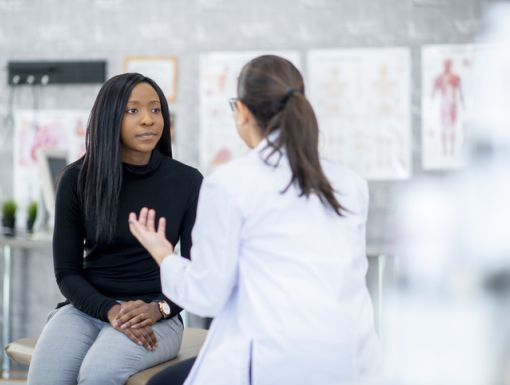
What Causes Cervical Cancer?
Before looking at what causes cervical cancer, it’s important to understand cancer of the cervix. The cervix is the passageway that connects the uterus with the vagina. Cervical cancer happens when the cells that make up the cervix begin to grow out of control. These cancerous cells can eventually spread to other tissue in the body.
According to the American Cancer Society, about 13,360 new cases of invasive cervical cancer will be diagnosed in the United States in 2025. Cervical cancer is most commonly diagnosed in women between 35 and 44. The average age at diagnosis is 50. Cervical cancer rarely develops in women younger than 20.
What are the risks factors for cervical cancer?
There are many risk factors that can increase your chance of developing cervical cancer. Although these risk factors can increase your chance, there are many women with increased risk factors who never develop the disease. However, it’s important to know the risks in order to address any factors that you may be able to change and receive regular screening to detect potential cervical cancer early.
- Human papillomavirus (HPV) infection
- Sexual history
- Smoking
- A weakened immune system
- Chlamydia infection
- Long term use of birth control pills
- Having multiple full-term pregnancies
- Young age at first full-term pregnancy
- A diet low in fruits
- Having a family history of cervical cancer
What are the symptoms of cervical cancer?
Symptoms of cervical cancer often do not begin until the cancer has progressed and grown into nearby tissue. The most common symptoms of cervical cancer are:
- Bleeding or spotting between or following periods
- Heavy or irregular periods
- Increased vaginal discharge
- Bleeding after menopause
- Persistent pelvic or back pain
- Swelling in the legs
- Problems urinating or having a bowel movement
- Blood in the urine
If you have these symptoms or any other ongoing gynecological issues, you should speak to your doctor even if you think they may be a sign or a less serious condition. The sooner a diagnosis can take place, the better the outcome.
How is cervical cancer diagnosed?
Cervical cancer is diagnosed using an HPV test, Pap test or a combination of both. In many women with early stage cervical cancer, there are no symptoms. That's why it’s so important to have regular screenings for cervical cancer.
- Pap Test: The Pap test is the most common screening for cervical cancer. During a Pap test, cells are gently brushed or scraped from the cervix and are examined under a microscope to check for precancerous cells or other abnormalities.
- HPV Test: The HPV test looks for high-risk or cancer-causing types of human papilloma virus by looking for the virus’s DNA in cervical cells. This test can be done at the same time of the Pap test. Your doctor may recommend the HPV test if your Pap test was abnormal or if you are over the age of 30.
Can cervical cancer be prevented?
The best way to prevent cervical cancer is to get screened. Routine screenings can find pre-cancers before they develop into invasive cancer.
Ochsner MD Anderson Cancer Center recommends a Pap test every three years from age 21 to 29.
Starting at age 30, women should get an HPV test every five years, or Pap every three years. These tests are regular screenings performed during a pelvic exam and can be performed by an Ochsner OB/GYN or by your primary care doctor.
Women age 65 or older may no longer need screening exams.
Women who are at high risk for cervical cancer may need to be screened more frequently. You should talk to your doctor if you believe you fall into a high-risk group.
You can also protect yourself from developing cervical cancer by getting the HPV vaccine. Since human papillomavirus virus is one of the risk factors for developing cervical cancer, vaccinating against it can significantly lower your chance. These vaccines are available to both males and females from childhood into young adulthood. It should be noted that the vaccine will not treat an HPV infection that is already there, only prevent an infection from occurring.
Learn more about cancer screening and prevention at Ochsner.



